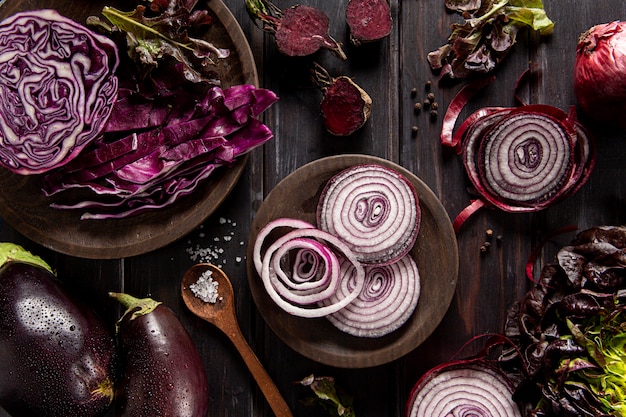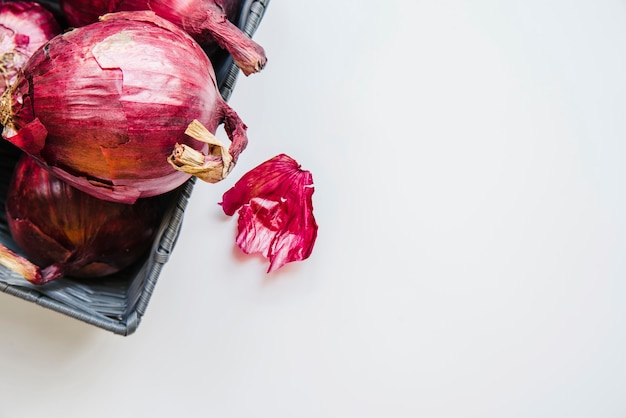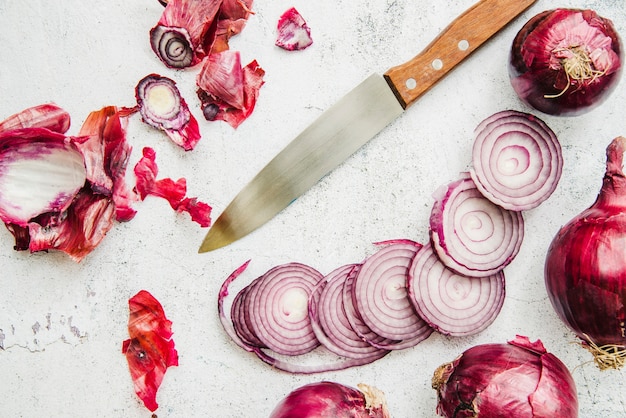Let's be honest, beets have a bit of a reputation for being boring, bland, and only suitable for grandma's boiled dinner. But I'm here to tell you that's a total misconception! Beets are a vibrant, earthy, and utterly delicious vegetable that deserves a place on your dinner table. As a seasoned foodie who's had my fair share of beet experiences – from the perfectly roasted ones that melt in your mouth to the disastrous attempts that left me with a crimson mess all over the kitchen – I've learned a thing or two about these misunderstood root vegetables.
This guide is your ultimate resource for everything beet. Whether you're a seasoned chef or just starting out, I'm going to walk you through every step, from choosing the perfect beet to whipping up a symphony of flavors in your kitchen. Get ready to rediscover the beet and all its glorious potential.
(Part 1) Choosing the Perfect Beets: A Colourful Selection

The first step in any culinary adventure is choosing the right ingredients. And when it comes to beets, you have a delightful array of options. From the classic red beets to the striking golden and Chioggia varieties, there's a beet out there to suit every palate and occasion. Let's delve into the world of beet varieties and find the perfect match for your culinary needs.
1. Red Beets: The Classic Choice
These are the most common and readily available beets, with their deep red flesh and earthy flavour. They're a staple for a reason! Red beets are incredibly versatile, perfect for roasting, pickling, or making into a vibrant salad. Their rich colour adds a pop to any dish and their flavour is both robust and satisfying.
2. golden beets: A Gentle Sweetness
Golden beets offer a milder flavour than their red counterparts, with a touch of sweetness that makes them a great choice for those who are new to the world of beets. Imagine a subtle sweetness that complements a variety of dishes without overwhelming your taste buds. They're also stunningly beautiful, adding a touch of sunshine to any dish. Their golden hue makes them a captivating addition to salads and side dishes.
3. Chioggia Beets: A Stunning Visual Feast
Chioggia beets, often called "candy cane" beets, are a real showstopper. Their flesh is a mesmerizing swirl of red and white, making them a delightful addition to any plate. It's like a work of art on your dinner table! They're slightly sweeter than red beets, with a delicate flavour that pairs well with cheeses and salads. Their unique appearance and flavour make them a perfect choice for entertaining or adding a touch of elegance to a simple meal.
4. Choosing the Right Beet: Tips and Tricks
When choosing beets, look for ones that are firm and smooth, with no signs of blemishes or cracks. Avoid beets that are soft or have wilted greens, as these are likely past their prime. A good beet should feel heavy for its size. You can also check the beet's greens - fresh greens indicate a good quality beet. Don't be afraid to ask your local market vendor for advice. They're usually happy to help you find the perfect beet for your needs.
(Part 2) Preparing the Beets: From Garden to Kitchen

Once you've chosen your beets, it's time to get down to business. Preparing beets might seem intimidating at first, but trust me, it's much easier than you think. With a few simple techniques, you can have perfectly cooked beets in no time. Let's break down the process into manageable steps, making your beet-cooking journey a breeze.
1. Trimming the Greens: A Step You Can't Skip
First things first, trim the beet greens, leaving about an inch of stem attached to the beet. This helps keep the beet moist during cooking. Don't throw away the greens! They're edible and can be used in various dishes. Think of them as a bonus – a delicious, leafy green side dish to your beets.
2. Washing the Beets: A Clean Slate
Give your beets a thorough wash under cold water, scrubbing off any dirt or debris. It's a good idea to use a vegetable brush for a deep clean. Imagine you're giving your beets a spa treatment, ensuring they're clean and ready for the next step.
3. how to cook beets: A Guide to Various Methods
Beets can be cooked in various ways, each resulting in different textures and flavours. Here are the most popular methods, each offering its own benefits and quirks:
- Roasting: This method yields tender, sweet beets with a slightly caramelized flavour. Simply wrap the beets in foil, drizzle with olive oil, salt, and pepper, and roast in a preheated oven at 400°F (200°C) for 45-60 minutes, or until tender. The foil creates a steamy environment, intensifying the beets' natural sweetness and adding a delightful depth of flavor.
- Boiling: A classic method, boiling beets is simple and quick. Place the beets in a large pot of boiling water and simmer for 30-45 minutes, or until tender. While simple, boiling can sometimes leach out some of the nutrients and flavor. But for a quick and easy side dish, it's a reliable option.
- Microwaving: A convenient option, microwaving beets is a quick way to cook them. Wrap the beets in a damp paper towel, place them in a microwave-safe bowl, and cook on high for 5-7 minutes, or until tender. This method is perfect for a busy weeknight when time is of the essence. However, keep an eye on your beets, as they can easily become overcooked.
- Pressure Cooking: For a super-fast and efficient method, pressure cooking is a great option. Add the beets to the pressure cooker with a cup of water, and cook for 15-20 minutes, or until tender. Pressure cooking is a game-changer for busy cooks. It significantly reduces cooking time, preserving the beet's nutrients and flavor. Just make sure your pressure cooker is compatible with beets.
(Part 3) Testing for Doneness: It's All About Texture
The best way to tell if a beet is cooked is to pierce it with a fork. If it goes in easily and the beet feels tender, it's ready to go. You can also check the beet by gently squeezing it; it should yield slightly to pressure. Think of it like a little beet massage – if it gives a bit, it's ready for the next step.
(Part 4) Peeling the Beets: A Tip for Easier Peeling
Once the beets are cooked, let them cool slightly before peeling. This will make the skin easier to remove. The easiest way to peel beets is to use a sharp knife or a vegetable peeler. The skin should slip off fairly easily once the beet has cooled. If you find that the skin is still stubborn, you can try soaking the beets in cold water for a few minutes. This will soften the skin and make it even easier to peel. You can even remove the skin under cold running water. Remember, patience is key! If the skin doesn't come off easily, just give it a bit more time and it will eventually surrender.
(Part 5) Storing Beets: Keeping the Flavour Fresh
Cooked beets can be stored in the refrigerator for up to 5 days. Simply wrap them in plastic wrap or store them in an airtight container. You can also freeze cooked beets for up to 3 months. To freeze beets, simply blanch them in boiling water for 2 minutes, then cool them in an ice bath. Drain and pat dry before freezing. This way, you can enjoy the deliciousness of beets anytime, even when they're not in season.
(Part 6) Getting Creative with Beets: A Symphony of Flavors
Now that you've mastered the basics of preparing beets, let's explore the endless possibilities of cooking with these vibrant root vegetables. From hearty salads to decadent desserts, beets can add a burst of flavour and colour to any dish. Let's unleash your creativity and discover the many ways beets can transform your culinary repertoire.
1. Salads and Sides: A Refreshing Start
Beets are a fantastic addition to salads, adding a sweet and earthy counterpoint to other ingredients. Try them in a simple beet salad with goat cheese and walnuts, or pair them with citrus fruits and herbs for a bright and refreshing side dish. Imagine a vibrant salad with a medley of textures and flavors, featuring beets as the star player.
2. Soups and Stews: A Warm Embrace
roasted beets add a wonderful depth of flavour to soups and stews. Think of a creamy beet soup with a dollop of crème fra??che, or a hearty lentil soup with chunks of roasted beets. The earthy sweetness of beets blends beautifully with the comforting warmth of soups and stews, creating a symphony of flavors that will warm you from the inside out.
3. Main Courses: A Burst of Colour
Beets can be the star of the show in main courses too. Consider a roasted beet and feta tart, a vegetarian burger with beet and walnut filling, or a simple beet and lentil salad. The vibrant colour of beets makes them a visually appealing addition to any main course, while their flavour adds a unique twist to traditional dishes.
4. Desserts: A Sweet Surprise
Beetroot can even be used in sweet dishes. Try a beet and chocolate cake, beet brownies, or a simple beet and ginger smoothie for a healthy and flavourful treat. The earthy sweetness of beets complements chocolate and other sweet ingredients, creating a unique and delicious flavour profile. Don't be afraid to experiment and let your creativity shine!
(Part 7) beet recipes: A Culinary Adventure
Here are a few of my favourite beet recipes to get you started. These recipes showcase the versatility of beets and inspire you to create your own culinary masterpieces.
1. roasted beet salad with Goat Cheese and Walnuts
This salad is a vibrant celebration of textures and flavors. The roasted beets offer a sweet and earthy base, while the goat cheese provides a tangy counterpoint. The toasted walnuts add a delightful crunch, and the balsamic vinegar creates a harmonious balance. It's a simple yet elegant salad that will impress your guests.
Ingredients:
- 1 pound beets, peeled and cut into wedges
- 2 tablespoons olive oil
- 1/2 teaspoon salt
- 1/4 teaspoon black pepper
- 4 ounces goat cheese, crumbled
- 1/4 cup walnuts, toasted
- 1 tablespoon balsamic vinegar
- 1 tablespoon chopped fresh parsley
Instructions:
- Preheat oven to 400°F (200°C).
- Toss beets with olive oil, salt, and pepper in a bowl.
- Spread beets in a single layer on a baking sheet.
- Roast for 30-40 minutes, or until tender.
- Let beets cool slightly.
- In a large bowl, combine beets, goat cheese, walnuts, balsamic vinegar, and parsley.
- Toss to combine.
- Serve immediately.
2. Creamy Beet Soup with Crème Fra??che
This soup is a warm and comforting dish that will tantalize your taste buds. The creamy texture, combined with the earthy sweetness of beets and the tangy touch of crème fra??che, creates a symphony of flavors. It's a perfect starter for a special occasion or a satisfying meal on a cold day.
Ingredients:
- 1 pound beets, peeled and cut into wedges
- 1 onion, chopped
- 2 cloves garlic, minced
- 4 cups vegetable broth
- 1/2 cup heavy cream
- 1/4 cup crème fra??che
- Salt and pepper to taste
Instructions:
- Preheat oven to 400°F (200°C).
- Toss beets with olive oil, salt, and pepper in a bowl.
- Spread beets in a single layer on a baking sheet.
- Roast for 30-40 minutes, or until tender.
- While beets are roasting, sauté onion and garlic in olive oil until softened.
- Add roasted beets, vegetable broth, and heavy cream to a blender and blend until smooth.
- Season with salt and pepper to taste.
- Pour soup into bowls and top with crème fra??che.
- Serve immediately.
(Part 8) Beetroot as a Colourful Ingredient
Beetroot isn't just a delicious vegetable; it's also a natural food colouring. Its rich, vibrant red colour can add a touch of whimsy to your baking, from cakes and cupcakes to frostings and even bread. Imagine a beautiful beet-coloured cake that's both visually stunning and delicious. Beetroot can even be used to dye fabrics and yarn, creating a natural and beautiful colour. It's a wonderful way to add a touch of nature to your crafts and projects.
(Part 9) FAQs: Your Beet Questions Answered
Let's address some common questions about beets, ensuring you have all the information you need to embark on your beet culinary journey.
1. Are beets good for you?
Yes, beets are packed with nutrients and offer various health benefits. They're a good source of fibre, vitamins, and minerals, including folate, potassium, and vitamin C. Beets are also known to help lower blood pressure and improve athletic performance. So not only are they delicious, but they're also good for you. It's a win-win situation!
2. How do you get rid of the beet stain?
beet juice can be quite stubborn, but you can usually remove stains by soaking the stained item in a mixture of cold water and baking soda for a few hours, then washing as usual. If you're dealing with a stubborn beet stain, don't panic! This simple trick will help you get rid of it. Remember, prevention is key – wear an apron when working with beets, and act quickly if you get a stain.
3. What does beet taste like?
The flavour of beet can vary depending on the variety, but it's generally described as sweet and earthy, with a slightly bitter note. Some people describe it as tasting like a sweet potato or a radish. It's a unique and complex flavour that many people find irresistible. Give it a try and see what you think!
4. Are beet greens edible?
Absolutely! Beet greens are a delicious and nutritious addition to salads and stir-fries. They have a slightly bitter, earthy flavour that pairs well with other leafy greens. Think of them as a bonus ingredient, adding another layer of flavour and texture to your dishes. Don't throw them away – embrace their deliciousness!
5. Can you eat the skin of the beet?
Yes, you can eat the skin of the beet, but it can be a little tough. It's best to peel the beet before cooking, but you can use the skin to make a vibrant stock or broth. It's a great way to use up the entire beet and add extra flavour to your dishes. Be resourceful and don't waste any part of this amazing vegetable!
So there you have it - your complete guide to preparing and cooking fresh beets. From choosing the perfect beet to creating culinary masterpieces, I hope this guide has inspired you to explore the world of beets and discover their delicious potential. Now go forth and beet!

Everyone is watching

Corn on the Cob: The Ultimate Guide to Perfectly Cooked Ears
Healthy MealsAh, corn on the cob. Just the name evokes images of sunny days, barbecues, and that sweet, juicy flavour that ...

Perfect Pork Roast Oven Cooking Time: A Guide to Delicious Results
Healthy MealsThere's something truly satisfying about a perfectly roasted pork. The aroma alone is enough to make your mout...

Scallops: The Ultimate Guide to Perfect Cooking
Healthy MealsAh, scallops. Those delicate, sweet, and utterly delicious morsels of the sea. They hold a special place in my...

Ham Cooking Time: How Long to Bake, Smoke, or Boil a Delicious Ham
Healthy MealsAh, ham. It's a classic, isn't it? A real crowd-pleaser, especially around holidays. And when done right, it'...

Spaghetti Squash: The Ultimate Guide to Cooking and Serving
Healthy MealsRemember that time you saw spaghetti squash at the supermarket, looking all bumpy and strange, and thought, "W...
